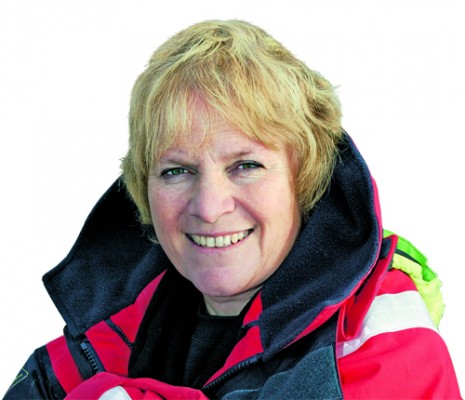Libby Purves January podcast: Sailors of old had great fun naming headlands and islands according to their mood swings. Now it’s our turn...
‘In this boat-free season of family gatherings, here’s a fine new holiday game…’
In Swallows and Amazons, the children endearingly name creeks and inlets, islands and bays: Wild Cat Island, Secret Water, and all that. But then, sailors always have.
Sometimes it is the names of captains and explorers that end up forever on the map, sometimes prosaic references to nearby place names on land. Sometimes it is homely or agricultural: there must be nearly as many Bull and Calf Rocks in Ireland as there are pubs. The further away from home the sailor gets, the more geographical and poetic the name: Tierra del Fuego, the land of fire; the Pacific, named the peaceful sea by Magellan himself.
But the best ones left to us by past seafarers tend, quite frankly, to be evidence of that recognisable bad temper, frustration, fright and general disillusion which comes over all of us at times when cruising. How many reefs – apart from the one off Pembrokeshire – have been crossly dubbed ‘The Bitches’? A whole swathe of South Atlantic, off Namibia, is forever the Skeleton Coast, after John Henry Marsh invented the name in an account of the wreck of the Dunedin Star. The Portuguese called it the Gates of Hell (though the Bushmen on land beat them to it with ‘The Land God Made In Anger’). Loch Hourn is also a Gaelic Gate of Hell. I used to find the prospect of Cape Wrath alarming, too, until I was told that for once it wasn’t a threat but a mutation of the Norse word for a corner, Hvarf.
But it was the 18th Century sailors of the great age of exploration who really got stuck in. Tierra del Fuego has Useless Bay, whereas a bit further down someone cheered up and found the Bay of Good Success. Captain George Vancouver liber- ally scattered his friends’ names across the North Pacific coast, but also snarlingly landed the name of Desolation Sound on a wild place of absolute beauty because ‘there was not a single prospect that was pleasing to the eye’. A very 18th Century point of view, as the Age of Reason often showed great distaste for uncombed, undesigned raw nature. Like those grand travellers who drew up the blinds of the coach as it went through the frightening ruggedness of the Highlands.
The Australian coast, too, is a mass of ill-tempered names; Matthew Flinders named Foul Bay in 1802, presumably because his anchor wouldn’t hold; the locals called it something prettier, like The Place of Many Waters. And beyond it, across Oz, lie plenty of others: it took little thought and a lot of hungry irritability to dot the shoreline map of that fabulous continent with names like Cape Disappointment, Hopeless Creek, Miserable Point and Ghastly Island.
Well, I may have made that last one up, but that’s the point today. We all should. For in this largely boat-free season of family gatherings and reminiscence, here’s a fine new holiday game. Get out last summer’s chart, get the handiest child to trace it, and rename all the anchorages. Very Swallows and Amazons: there’ll be Seal Bay and Spinnaker Reach, and probably Lumpy Passage, Sickmake Rapids and Chipshop Haven. Happy memories. But, wandering past as I brood, my husband reckons that the scurvy-ridden, disaffected 18th century mood may fit much better. He suggests adult additons like Temper Point, SodThePilot Entry, Crewbastard Coast, Anchordrag Alley and, I am sorry to report, Dumpwife Bay. How cynical. Yet imagine what a fine heirloom the finished chart will be, decorated with photographs, rags of logbook ripped in rage after someone wrote a disobliging comment, and authentic grease stains from the panicky dismantling of the anchor windlass. The National Maritime Museum will be bidding for that one day.
Libby Purves




